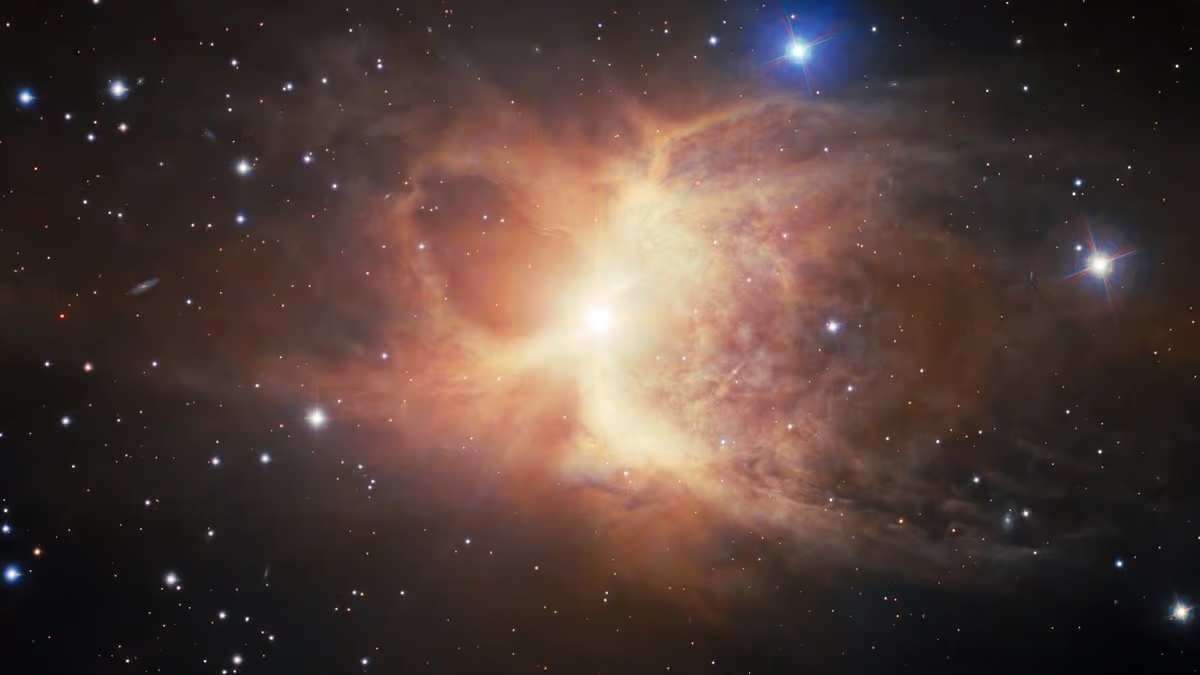17.07.2023

A mere 1,200 light years away from Earth sits a pair of cosmic circles, the remains of an ancient death.
The nebula IC2220 – or the Toby Jug Nebula – has been snapped by the Gemini South telescope, an 8.1 metre optical and infrared telescope in the Chilean Andes, which makes up one half of the International Gemini Observatory.
The image highlights the red giant star HR3126 at the core and the surrounding double looped structure of dust and gas. It’s called the Toby Jug Nebula because it resembles (slightly) a style of old English jug in the shape of a person with a tricorn hat.
The nebula is quite rare cosmologically, as the end-of-life phase of a red giant is brief, and structures like the loops rarely form around them.
Red giants are formed once a star – like our sun – runs out of hydrogen. The star’s core contracts, while the atmosphere becomes much larger. This atmospheric expansion of HR3126 also meant that the outer layers of the star shed, forming the gas and dust loops.
The red dwarf is significantly younger than our Sun – only 50 million years compared to the Sun’s 4.6 billion – and being smaller it burnt through all it’s hydrogen much faster. It’s estimated the Sun will be exhausted in about 5 billion years
Although we have this new image, we still don’t know everything about nebula IC2220. It was originally thought that the two lobed structure was formed by HR3126 and a companion. However, while no binary star was found, there was a compact disc of material. This could be the remains of the companion, producing the looping layers.
Quelle: COSMOS

